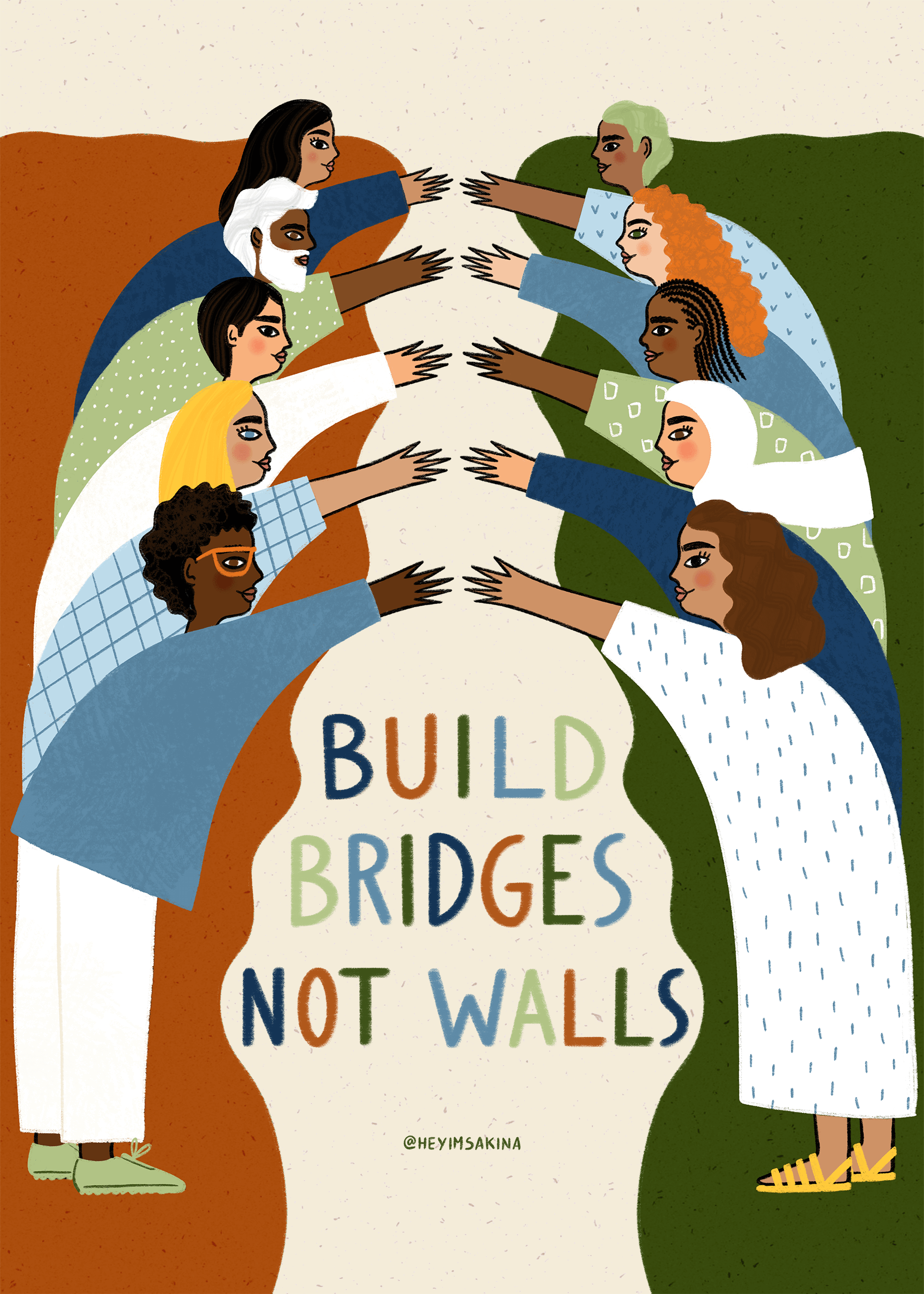< previous page | home page | next page >
If progressives are to win, transformative change in the long run, we will not do so by achieving piecemeal policy victories for individual target groups. Rather, victory will be in shifting people’s worldview about themselves and the kind of society they want, from one rooted in values and beliefs that are individualistic, cynical, and mistrustful of government and each other, to one grounded in our inherent interconnectedness, shared responsibility to each other, and collective capacity to effect change. To achieve a world where we all belong, movement organizing strategies must include the element of bridging across differences, a project aimed at crossing identity-based lines and creating shared identities.
The bridging-to-belonging model was developed by the Blueprint for Belonging (B4B) project of the Othering and Belonging Institute, UC Berkeley. B4B was initiated in 2015 by a team of OBI researchers and analysts–some experienced in community organizing and social movements–as a California-wide network of researchers, base-building networks, community organizing groups, faith-based initiatives, policy advocates, and labor organizations.
The consensus of the network is that power building and organizing must be rooted in bridging. To bridge involves two or more groups coming together across acknowledged lines of difference in a way that both affirms their distinct identities, and creates a new, more expansive identity. Bridging addresses tensions or “breaking” dynamics and narratives that sustain division in order to develop a new “we” that is not only more inclusive, but cohesive, durable, and consistent with bringing about belonging and greater social justice. The new “we” that results need not agree on everything, or even very much; but its members should have a shared empathy and lasting stake in one another. Bridging rejects all strict “us-versus-them” framings, but without erasing what is different and unique in each party.
The outcome of this process should be the building of durable bridges between different identity groups. To be clear, bridging is not about “saming”—that is, subsuming or erasing existing smaller “we” identities as we create a bigger “we.” Bridging creates a space that is larger than the sum of its parts, that honors and affirms the multiple identities that individuals and groups bring to the table. But it also values what can only come about when we extend who we are beyond our own identity group(s) and build something more expansive. And that is the possibility of the collective that we want to spotlight in a strategic narrative for belonging.
That narrative and other strategies that address “othering”, especially anti-Black and anti-immigrant sentiment, will not only create stronger cross-group relations, but will also chip away at deep, strategically implanted prejudices that fuel resentment toward efforts to address poverty and inequality. Reducing racism and xenophobia means removing a barrier to addressing inequality—and this is true with respect to both whites and people of color.
A coalition of convenience, or temporary cross-group coordination to win a campaign, does not meet the bridging criteria. Bridging strategies require that organizers create opportunities for intentional bridging encounters. Broadly speaking, an intentional bridging encounter is one that brings together community members across a recognized line of difference for the purpose of interacting in a way that increases cross-group empathy, mutual understanding, and a lasting stake in one another. Its purpose is also to counter breaking narratives and deprive them of their currency. Finally, the goal is to create a third space and shared identity that can be animated for the public good.
Bridging is not a new phenomenon. Drawing upon the history of the social movements of the 1960s and 1970s when the terms “people of color” and “Third World peoples” signaled a common identity across communities in the struggle against racism, economic exploitation, and colonialism, this identity formation is an imperative for 21st century activists (See “A 21st Century Movement Building Challenge: Forging A common Identity Among ‘People of Color’ by Gerald Lenoir).
There are many examples of bridging initiatives in today’s context as well. Othering and Belonging Institute staff members have developed a Bridging to Belonging Case Series with podcasts and written studies that illustrate real world examples of bridging around different issues and in different organizations and communities across the country.
The aim of bridging is to challenge the dominant narrative, to change people’s worldviews, and to build enough power to produce transformative changes in human relationships and in laws and policies to address inequality and political polarization. The end goal is a country and a world where we all belong.
Art for this paper is by Sakina Saïdi for Fine Acts.


